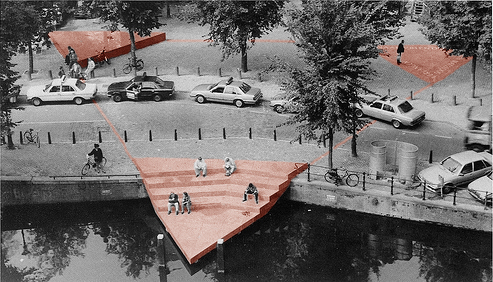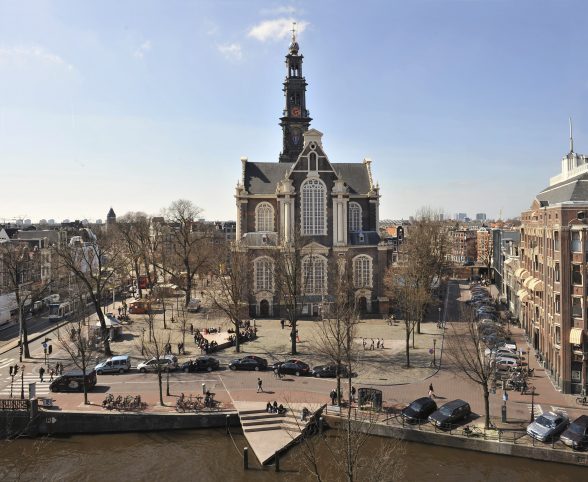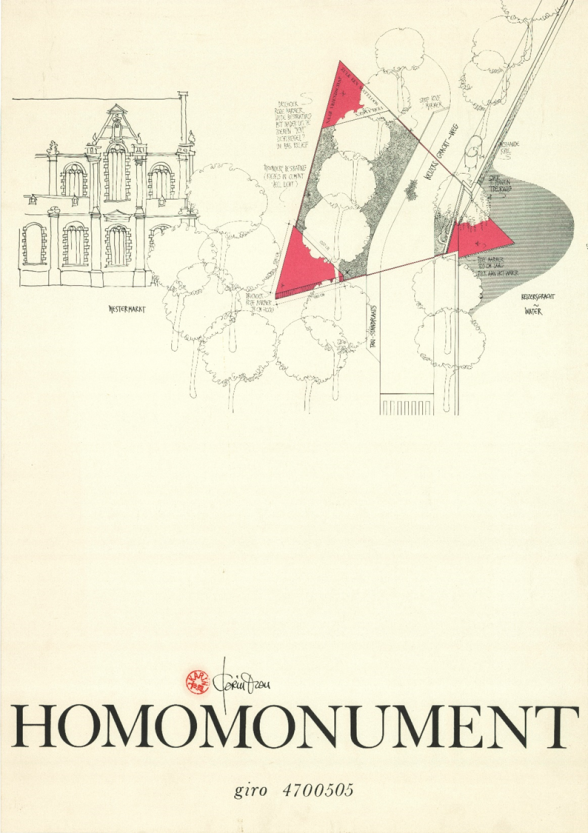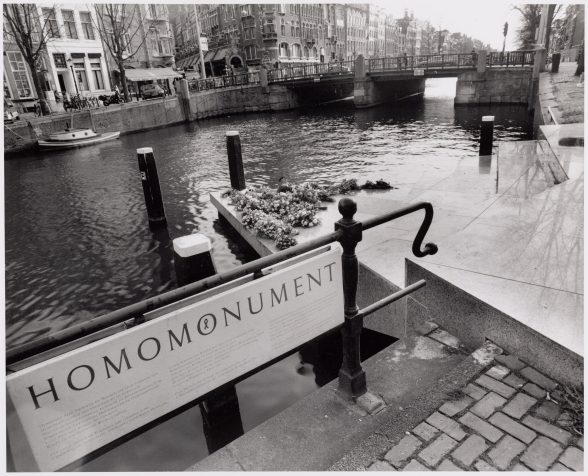This website uses cookies
This website uses cookies to enable it to function properly and to analyse how the website is used. Please click 'Close' to accept and continue using the website.


February 2022 - Homomonument, Amsterdam

Amsterdam – Karin Daan (1987)
Following German occupation of the Netherlands in 1945, many memorials were built in the city. The National Monument on Dam Square, Amsterdam became the centre of remembrance in Holland, and many of the old buildings that survived bear new layers of trauma and memory, like the Portuguese Synagogue, one of the only remaining buildings in the city’s Jewish neighbourhood, or the Anne Frank House. Not far from the latter, on a small square, lies the Homomonument. Unusually for Amsterdam memorials, people have been bringing flowers to it every day since it was erected in 1987.

Source: Stadsarchief Amsterdam / Kransberg, Doriann
A tangible space for memory, the monument consists of three pink granite triangles, which together form a larger triangle, connected by granite lines cutting through the streets and pavement, making the monument a part of the city’s very fabric and identity. It memorialises homosexual victims who were persecuted during Nazi occupation because of their sexuality, making it the first queer memorial of its kind in the world.
The monument was designed by Karin Daan, who won a competition organised by the city government in 1980, after the queer community convinced the city of the need for a gay and lesbian memorial. The monument’s triangles resemble the pink fabric triangles used by the Nazis during the Second World War to publicly mark homosexuals, reclaiming the shape as an international queer symbol.

Credit: Karin Daan.
Each triangle symbolises a different aspect of queer memory. The triangle extending over one of the city’s canals symbolises the present. It points to the National Monument on Dam Square, and functions as a place for present-day remembrance, therefore activating the past in order to spur social change. The triangle on street level symbolises the oppression and homophobic violence queer people faced in the past. It points towards the Anne Frank House on the Prinsengracht and contains verse by gay Jewish poet Jacob Israël de Haan: Naar vriendschap zulk een mateloos verlangen (“Such an Endless Longing for Friendship”). The triangle that rises from street level symbolises the future, and serves as a meeting place for people to come together. It can be used a podium for public speaking or a social meeting place. It points to the former office of the Dutch LGBTQIA+ interest organisation the, Cultuur en Ontspanningcentrum (COC) (“Centre for Culture and Leisure”), whose name functioned as a cover, to hide its real purpose.
Since its erection, the monument has been actively used by the queer community, and in 2017 it achieved ‘monumental status’ from the city government, protecting it from destruction or future alterations.

Source: Stadsarchief Amsterdam / Alberts, Martin
Jeroen van Dijk is an architectural history and heritage professional whose research centres on LGBTQ+ perspectives in the built environment. He has researched queer heritage in London and Amsterdam, focusing on queer memorials and night life. This vignette is featured in Queer Spaces: an Atlas of LGBTQIA+ Places & Stories (edited by Adam Nathaniel Furman and Joshua Mardell) available for pre-order.
The Building of the Month feature is edited by Dr. Joshua Mardell.
To celebrate LGBT history month, the C20 is hosting “C20 Queer Spaces: from Finella to Sissinghurst Talk”, with Elizabeth Darling and Jane Stevenson, on February 10th. For more information and to book, click here.

In partnership with The Society of Architectural Historians of Great Britain
Look for past Buildings of the Month by entering the name of an individual building or architect or browsing the drop down list.

Become a C20 member today and help save our modern design heritage.